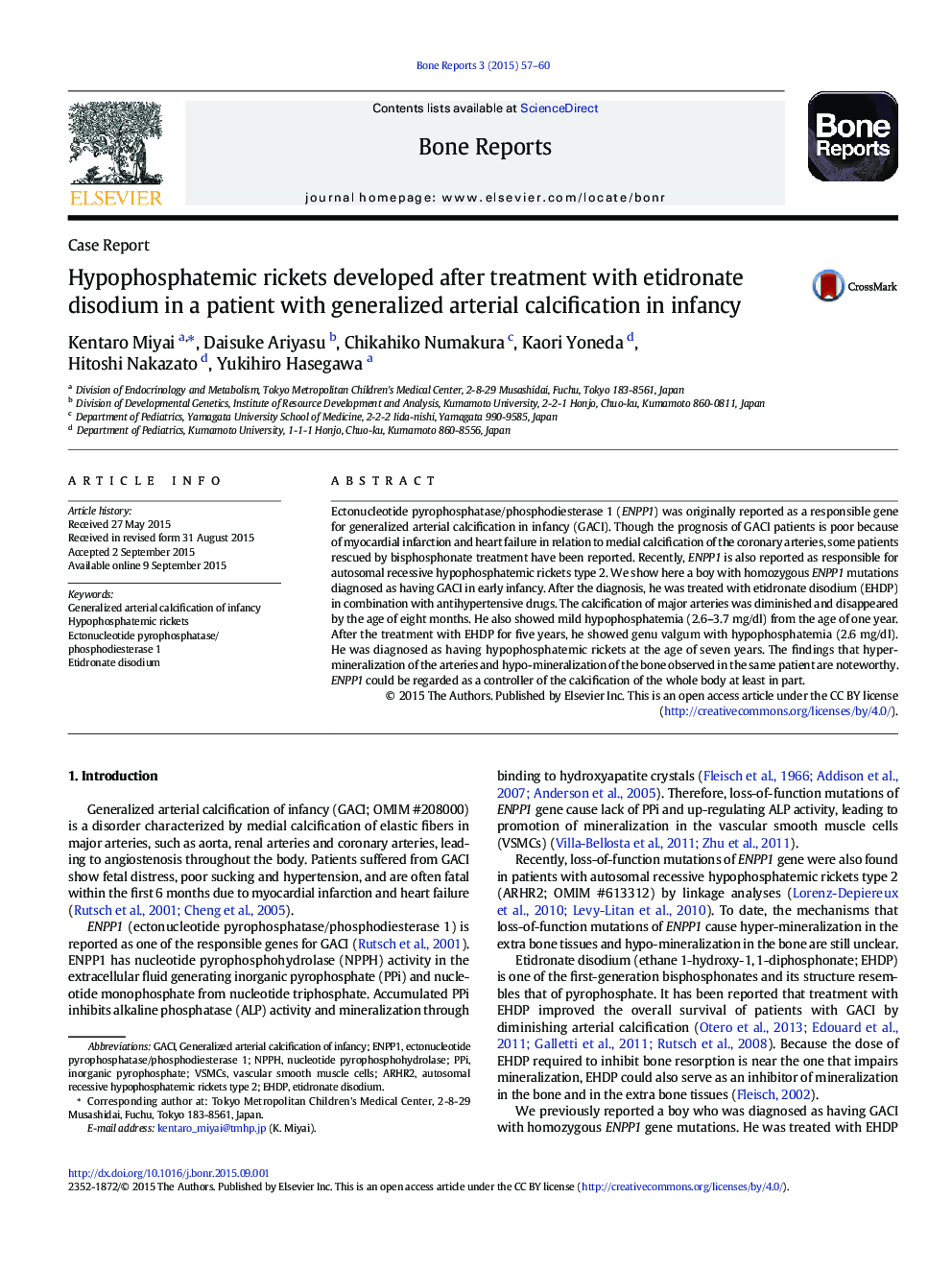| Article ID | Journal | Published Year | Pages | File Type |
|---|---|---|---|---|
| 2792363 | Bone Reports | 2015 | 4 Pages |
•A boy with homozygous ENPP1 mutation suffered GACI and subsequent hypophosphatemic rickets.•ENPP1 mutation caused both hyper-mineralization in the arteries and hypo-mineralization in the bone in the same patient.•ENPP1 could be regarded as a mineralization controller of the body.
Ectonucleotide pyrophosphatase/phosphodiesterase 1 (ENPP1) was originally reported as a responsible gene for generalized arterial calcification in infancy (GACI). Though the prognosis of GACI patients is poor because of myocardial infarction and heart failure in relation to medial calcification of the coronary arteries, some patients rescued by bisphosphonate treatment have been reported. Recently, ENPP1 is also reported as responsible for autosomal recessive hypophosphatemic rickets type 2. We show here a boy with homozygous ENPP1 mutations diagnosed as having GACI in early infancy. After the diagnosis, he was treated with etidronate disodium (EHDP) in combination with antihypertensive drugs. The calcification of major arteries was diminished and disappeared by the age of eight months. He also showed mild hypophosphatemia (2.6–3.7 mg/dl) from the age of one year. After the treatment with EHDP for five years, he showed genu valgum with hypophosphatemia (2.6 mg/dl). He was diagnosed as having hypophosphatemic rickets at the age of seven years. The findings that hyper-mineralization of the arteries and hypo-mineralization of the bone observed in the same patient are noteworthy. ENPP1 could be regarded as a controller of the calcification of the whole body at least in part.
